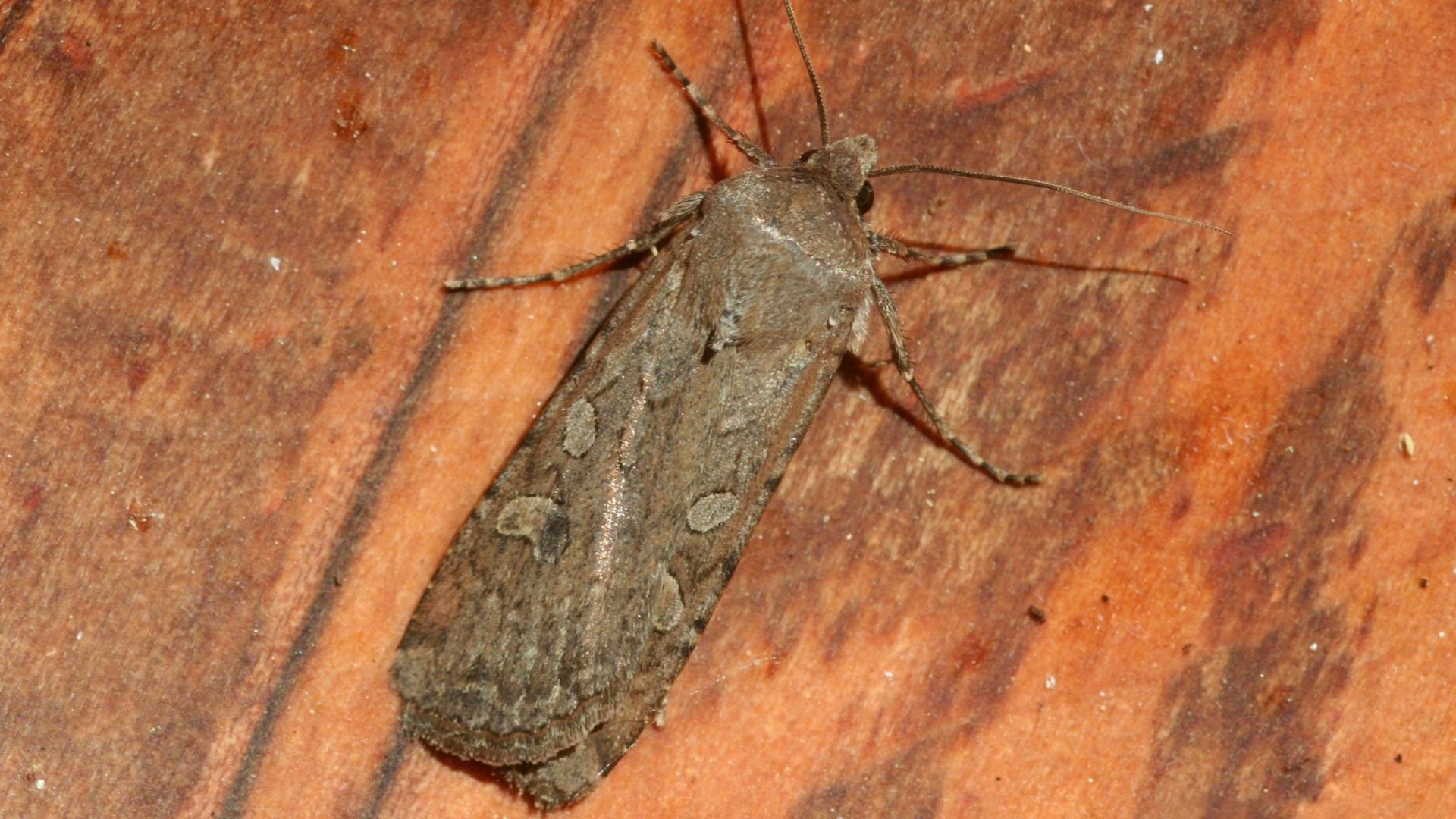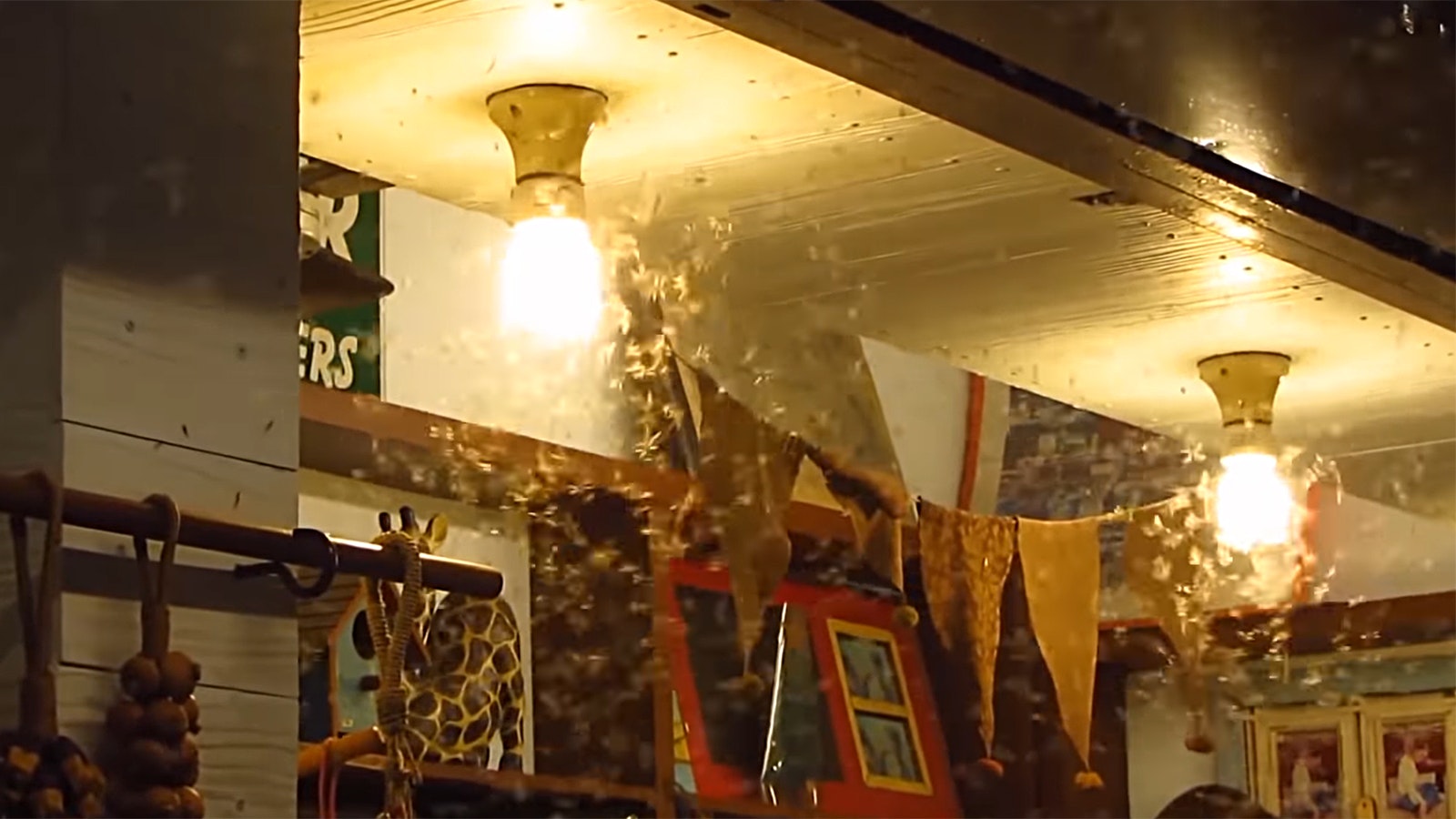There are some aspects of spring everyone can look forward to, like warmer weather and green hills and trees.
But most people could do without the annual migration of the Euxoa auxiliaris, or army cutworm moth — most commonly known as the miller moth.
“I come in every morning, and I turn on the light and, oh my gosh, they're just all over the place,” said Cowboy State Daily meteorologist Don Day, whose office at the old airport control tower in Cheyenne is literally a beacon for the insects, which are drawn to electric light.
“It's an older building, and it's one of the taller buildings around,” said Day. “And if somebody leaves a light on in the building, or just the accent lights on doorways and stuff, they go to the light.”
Annual Migration
The army cutworm moth — called “miller” because of the fine scales that easily rub off the wings, reminiscent of the flour dust that covers the clothing of someone who mills grain — is a migratory noctuid, a moth that typically has dull forewings and pale or colorful hind wings.
The insect’s annual migration pattern takes it from, and returning to, the great plains in May and June.
Recent research from Montana State University revealed the vast distances and incredible numbers of miller moths that migrate yearly to the Absaroka Mountains in northwestern Wyoming and Montana.
“To estimate abundance, we sampled the airspace with a radar stationed within 1 km of an aggregation site in the GYE (Greater Yellowstone Ecosystem) during 2020 and 2021,” reads the scientific finding by Clare Dittemore. “We estimate that 5 million moths passed through our radar's sampling plane over the course of 20 hours (five nights of movement).”

Annoying Pests
Because they are drawn to light, people have to deal with the messy, fluttery insects attracted to house lights in the evenings.
But as pesky as the insects may be, they are harmless, said University of Wyoming entomologist Scott Schell.
“They can’t bite, sting or feed on anything in the house,” Schell told Cowboy State Daily. “But once they are in your house, millers are hard to get back outside, and they can mark walls, ceilings and curtains with reddish brown ‘spots.’”
Beneficial Insects
And Schell said that miller moths are actually beneficial in a number of ways.
“They do feed on many different species of flowering plants as migrating adults, and in the process they do pollinate,” he said.
Additionally, the insects make tasty meals for birds, and muchable appetizers for bears in the high country.
“In the grand scheme of things, millers are important to the Great Plains and Rocky Mountain region’s ecology, and many different animals use them for food,” said Schell. “Most famous are grizzly bears, in areas where they still exist. The millers are a huge influx of calories and nutrients to the creatures living in the mountains.”

But If You Really Want To Get Rid Of Them …
As beneficial as miller moths are, if people are intent on getting rid of the nuisances, Don Day shares his foolproof recipe for getting rid of the bothersome creatures.
“Shane Smith, who used to be the director of the Cheyenne Botanic Gardens here, he had this trick where you get a lamp, or you get a bright light, and you put it next to a bucket of soapy water and you turn off all the lights, so that is the only light source in the building or the room,” said Day.
“They just naturally gravitate toward the light and they fly around it, and most of the time they get stuck in that soapy water.”
Day said this moth trap is quite effective.
“There was one year I came in, and I think I counted like 50 (moths in the soapy water),” he said.
But rather than eliminating the insects, Schell advises people try to keep the moths out of their houses and turn off outside lights to reduce the number seeking shelter. After all, they do play an important role in the food chain.
“With the decline of the Yellowstone cutthroat spawning runs and the demise of white bark pine that produced nut-filled cones, the millers are even more important,” he said.
“However, I don’t think killing a few that get inside your house will be the cause of their demise as a species.”
Another Option
There is a middle ground to consider when dealing with miller moths.
In the cinematic masterpiece 'Tommy Boy,' actor David Spade's character was annoyed when the character portrayed by immortal legend Chris Farley left the window open filling the motel room with moths.
Spade, in an appearance which many have said deserved an Academy Award, took a vacuum cleaner and sucked the insects into the contraption mid-flight.
Although it wasn't shown, it has been theorized that Spade then went outside and let the miller moths go to enjoy another day.
It's a win-win solution for those who want to keep the miller moths alive but not in their house.





